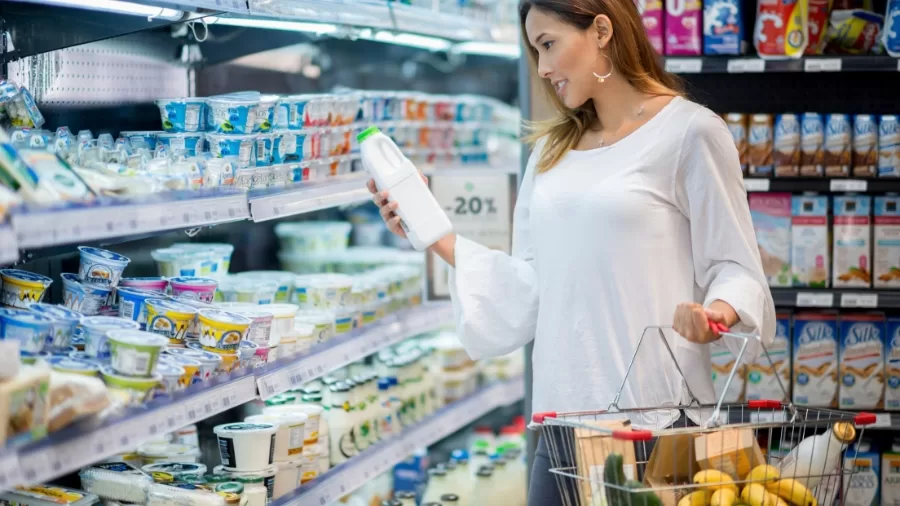Business
How Rising Grocery Prices Are Shaping the Future of Food Shopping

- As grocery prices keep rising, consumers have increasingly taken cost-saving measures such as trying private labels and emphasizing really necessary purchases.
- The advent of e-commerce and personalized shopping experiences is growing rapidly, and with investments in AI and digital integration, Amazon and other retailers are enhancing their convenience solutions.
- Discount retailers find themselves increasingly faced with additional priorities set by consumers, balancing value and convenience, all of which influence mergers and acquisitions in reshaping the competitive grocery marketplace.
In 2025, the grocery store will be on an entirely different level, opening both challenges and opportunities to how people are going to shop for food. With rising inflation as a crucial factor, changing consumer priorities, and the rapid growth of eCommerce, major changes occur in shopping patterns and retailer strategies. The Kroger-Albertson merger not succeeding in joining forces coupled with constant consolidation across the board means that these retailers must innovate themselves against the competition in a complex marketplace.
Consumer Behaviour Changes with Increases in Grocery Prices
Grocery elevation prices have changed consumer shopping practices significantly in the last few years. Most households are saving costs, either by switching to private-label brands or pantry essentials, or reducing basket sizes as of now, while inflationary pressures still bear down on household budgets.
The changing consumer behaviour trend indicates that consumers are now going for purposeful shopping trips that are shorter and more focused. The trips are made with necessities in mind rather than impulse buying. Currently, with the high cost of living affecting most families, 61 per cent of consumers living paycheck-to-paycheck prioritise essential groceries over non-essentials. From that moment on, it is clear that consumers have played a great role in how retailers have approached prices, promotions, and, ultimately, the products themselves.
The Growth of Online Business and Personalization
According to predictions, the grocery industry will continue to grow its eCommerce market further into 2025. Predicted growth rates for online grocery sales range as high as 10%, above total market growth. Much money has been invested by retailers into digital platforms focused on personalised shopping experiences integrated with online and in-store options.
Integration of AI into stores has already begun by Amazon with their assistant, Rufus, which will offer clients a more personalised shopping experience. As consumers are becoming habitual with convenience digitization, grocery stores are concerned with increasing online business and improving in-store pickup experience, especially concerning mobile use.
The same changes are happening in the experience of shopping within the store itself. Personalised styling and curated shopping experiences have emerged as some of the services that retailers will add to their stores to heighten engagement and footfall. For grocery chains, technology would need to be interlaced into physical touchpoints to end up meeting the growing demands of tech-savvy customers.
Discount Retailers Face Growing Pressure
Despite managing to surmount tough times during inflationary periods, discount grocery retailers like Aldi and Dollar General are now in deep crisis. As the priorities of consumers shift to value, convenience, and variety, discount chains are also losing customers to other non-discounted chains or even online through e-commerce.
These larger players such as Walmart and Amazon have gotten an advantage that can help them enjoy the eCommerce movements in grocery while constantly offering a wider product range at a competitive price. Possible ways that discount grocers can keep themselves up to speed with the market turn largely on balancing low prices with convenience and variety.
Mergers, Acquisitions, and Industry Consolidation
As far as continued consolidations are concerned, consolidation in the grocery sector requires further scrutiny as it makes companies chase after scale to be able to survive against dominant players. The break-up of the Kroger-Albertsons merger leaves both firms hanging under uncertainty about where they go from here. Regional grocers aiming for a growth path through mergers and acquisitions have fewer options for partnerships with and competition with strong retailers.
Rather, small retailers will be eyeing consolidation opportunities either by acquiring complementary businesses or through alliances to stay competitive, this trend is expected to intensify as grocers seek ways to strengthen their market positions with the prevailing conditions of high inflation and changing consumer behaviour.
The Role of AI and Automation in Retail
More recently, the roles of artificial intelligence and automation in the grocery industry has expanded. Currently, AI is helping grocers with inventory management, price optimisation, and personalisation. Predicting demand, streamlining supply chains, and optimising pricing are critical for competing in a cost-conscious consumer market.
The advent of artificial intelligence further leads to questions about ethics, the privacy of data and the adequacy of training for the workforce. So when automating operations for efficiency, it is forecast that there will be new roles that require the employment of more sophisticated skills. Thus the retailer has to weigh the advantages of technology against having a workforce that is prepared for the needs of a changing retail world.
Affordability Remains a Central Theme
Affordability is likely to remain a central theme in the grocery industry in 2025. For consumers who appreciate the value of groceries, retailers are expected to respond with increased private-label products and changed pricing strategies. There is a model of success for traditional grocery stores on how to remain competitive without compromising on quality from discount chain Aldi.
In answer to these pressures, players like Loblaws in Canada are adding to their range of discount offerings, such as an increased tie-up with No Frills. Value and affordability enhancement gives grocers a really good opening into merchant convenience as well as cheap solutions considering today’s consumers.
The Future of Grocery Retail
Future grocery remains a place for intense competition, with the growth of the moderate range attributed to the increase in population and the growing urbanisation as well as the evolving demands of the consumer. Evolving continued digital movement will put challenges on the brick-and-mortar stores to rethink and even enhance their concepts of in-store experience.
For grocery retailers, success lies in combining convenience, value, and personalised services. It needs digital innovation, integration of artificial intelligence, and adaptability to changing consumer behaviour and preferences. In a future-driven industry like that, grocers have to continue being agile to face a rather cost-sensitive and technology-savvy population.
In effect, grocery 2025 will be characterised as the confluence of value-driven formats, digital transformation, and strategic consolidation. Adapting to these currents will make trade-winning; the convenience and value a consumer seeks out will wash over that particular store.


















































